If you’re planning a trip to Bavaria and are dreaming of charming cobbled streets, magnificent palaces, and soaring Gothic cathedrals, then Regensburg is the city for you! In this guide, I’m sharing the top things to do in Regensburg, a medieval jewel in the heart of southern Germany.
This post contains affiliate links, from which we may receive a commission. You can read our full affiliate disclosure here.
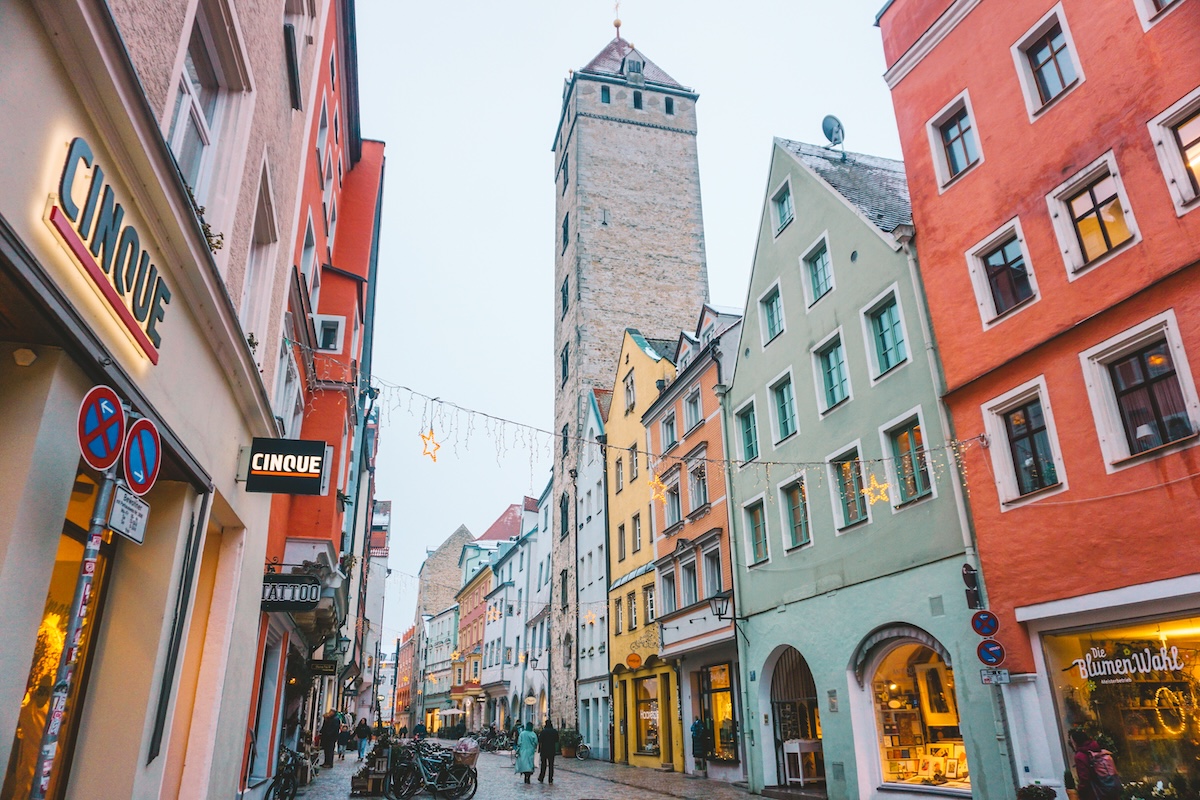
Regensburg is a beautiful city nestled along the banks of the Danube River, in the heart of Bavaria. It’s one of the most popular stops along Danube River cruise ship routes, and the city also makes a fantastic day trip from either Nuremberg or Munich.
Why so much love for Regensburg? Because it has one of the best preserved medieval centers in all of Germany. The Old Town alone is a UNESCO World Heritage Site that boasts more than 980 listed buildings!
Regensburg’s long history stretches back to the Roman Empire, whose architectural influence can still be seen in the city center. The city is known for its Old Stone Bridge, historic Old Town, and Christmas markets (which you might notice in some of the photos in this guide since I visited Regensburg over Christmas!).
In short, it’s one of the jewels of Bavaria and isn’t to be missed. Here’s what to do in Regensburg, listed in as close to walking order as I could manage. Hopefully that makes it a little easier to plan your visit!
Happy exploring! -Claire
Map of the Main Attractions
Visiting as a Day Trip? Use This Itinerary!
One day in Regensburg is enough time to see the city’s top attractions, and if you follow my day trip itinerary I pinky promise you won’t feel rushed during your visit. You can’t see everything in Regensburg in just a day, of course, but you can see a whole lot!
(And if you’re visiting during Christmas market season, my day trip guide provides tips on how to adapt your itinerary for a December visit.)
Go on a Walking Tour
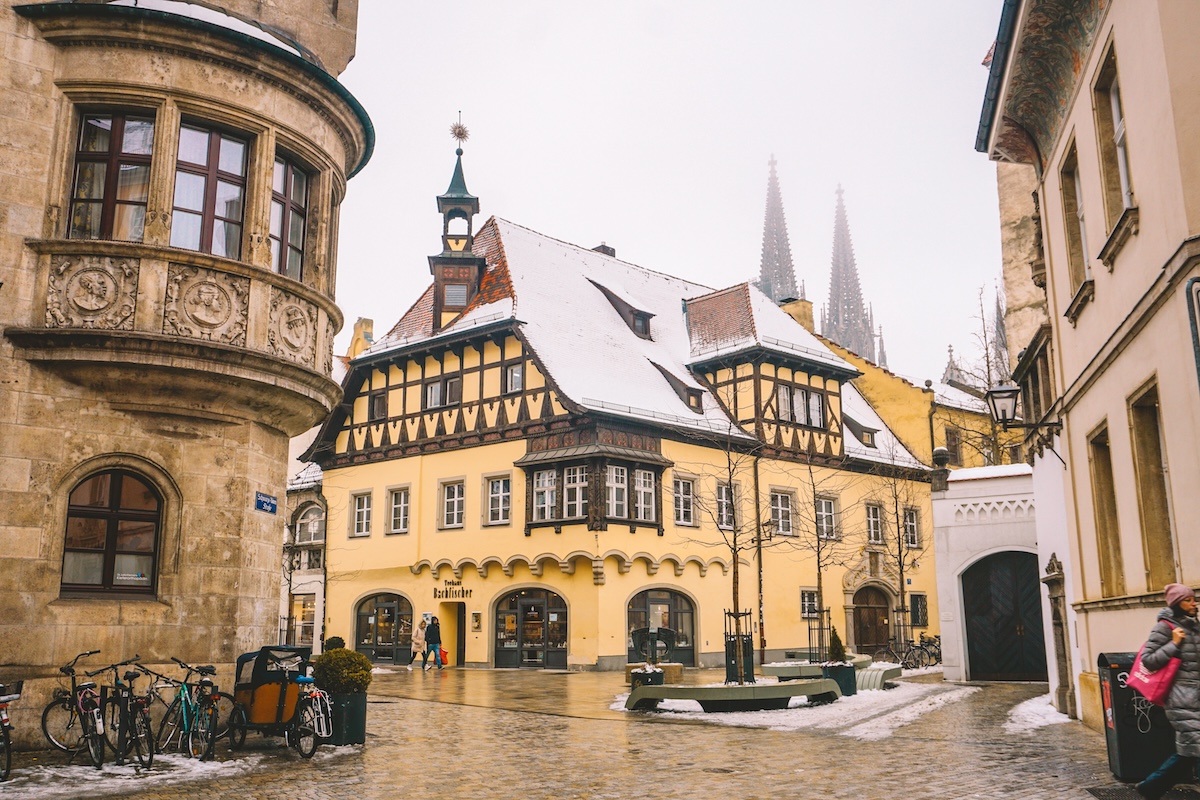
Most of the things to do and see in Regensburg can be explored in a single day. To make the most of your visit, you might want to consider booking a walking tour of the Old Town (this is an especially great option if you won’t have the time to go to any of the museums in the city to learn about the history of the region).
GuruWalk offers a free walking tour of Regensburg, and the tourist information center offers paid walking tours as well (the English tours appear to be limited to weekends only, FYI).
Explore the Old Town (Altstadt)

Most of the tourist attractions in Regensburg mentioned in this guide fall within the Old Town. However, there are a few areas I wanted to mention so you don’t miss them!
- Haidplatz — Originally a meadow located near the Roman fort (remember, Regensburg was part of the Holy Roman Empire!). Eventually, buildings were erected to create the square and Haidplatz became a popular jousting spot. Today it’s a bustling square with lots of cafes. Be sure to find the Hotel Goldenes Kreuz (Golden Cross Hotel), which has counted King Ludwig I of Bavaria and Emperor Wilhelm I as guests.
- Bismarckplatz — Where the Regensburg Theater is located. A weekly market takes place here each Saturday.
- Historische Wurstkuchl (Thundorferstraße 3) — Allegedly the oldest bratwurst restaurant in the world. It’s a quaint spot with tables along the Danube; you can either sit down to eat or take your bratwurst to go (my recommendation for budget travelers!).
Visit the Old Town Hall (Altes Rathaus)

Built in 1245 after Regensburg was granted the status of a Free Imperial City, the Old Town Hall served as the meeting place for The Perpetual Diet for nearly 150 years.
What’s a “Perpetual Diet?” It’s where the upper crust of the Holy Roman Empire talked politics. The Regensburg Diet is thought to be the forerunner to the German parliament and the EU!
The Old Town Hall is impossible to miss because 1) the tourist information center is just across the street and I bet you’ll be popping inside to grab a map, and 2) it’s got an 180-foot clock tower!
While visiting the Old Town Hall, make sure not to miss:
- The Imperial Hall — This is where the Imperial Diet met.
- The Fragstatt — The interrogation room aka medieval dungeon / torture chamber.
- The Reichstag Museum — A series of historic rooms from the times of the Imperial Diet.
Claire’s Tip: The Old Town Hall can only be seen on a guided tour. Tickets cost 7.50 Euros and can be purchased at the tourist information office (Rathausplatz 4).
Admire the Goliath House (Goliathhaus)
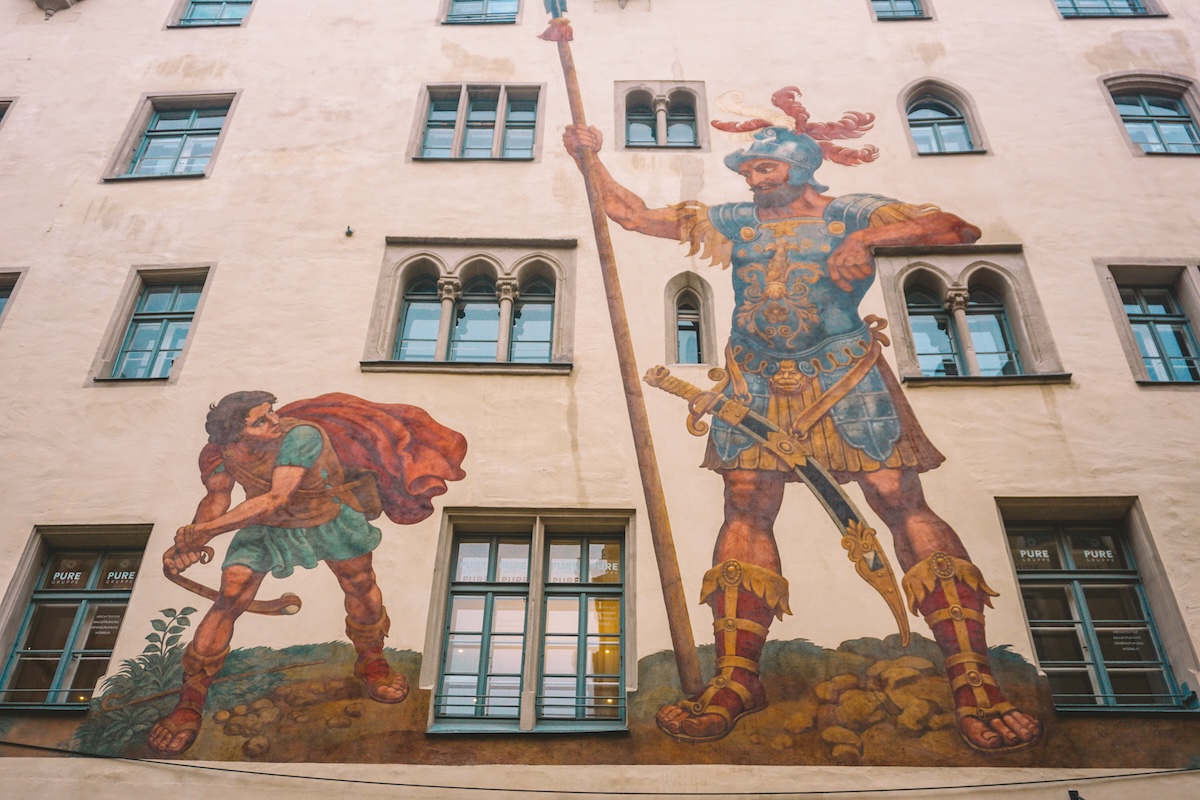
Another quirky thing to see in Regensburg is the Goliath House, so named because of the massive mural of David and Goliath painted on the side of the building.
Who was Goliath? In the Bible, the book of Samuel details the story of the giant Goliath. Goliath was beaten in single combat by David, who was armed merely with a slingshot and five stones.
The Goliath House was built in 1260 and the mural was painted in 1573. Look closely at the lower corner of the mural — do you see the frog that’s painted there? That frog is actually graffiti left behind by a man called Hans Kranzberg, who was hired to restore the mural in the 1840s!
See the Old Roman Gate (Porta Praetoria)

The Porta Praetoria is one of the few architectural remnants of the Holy Roman Empire in Regensburg and is one of only two surviving Roman gates north of the Alps.
The former gate is partially in ruins and has been set into the wall of a modern building. If you didn’t know the gate was there, you’d likely walk right past it!
Visit St. Peter’s Cathedral (Dom St. Peter)
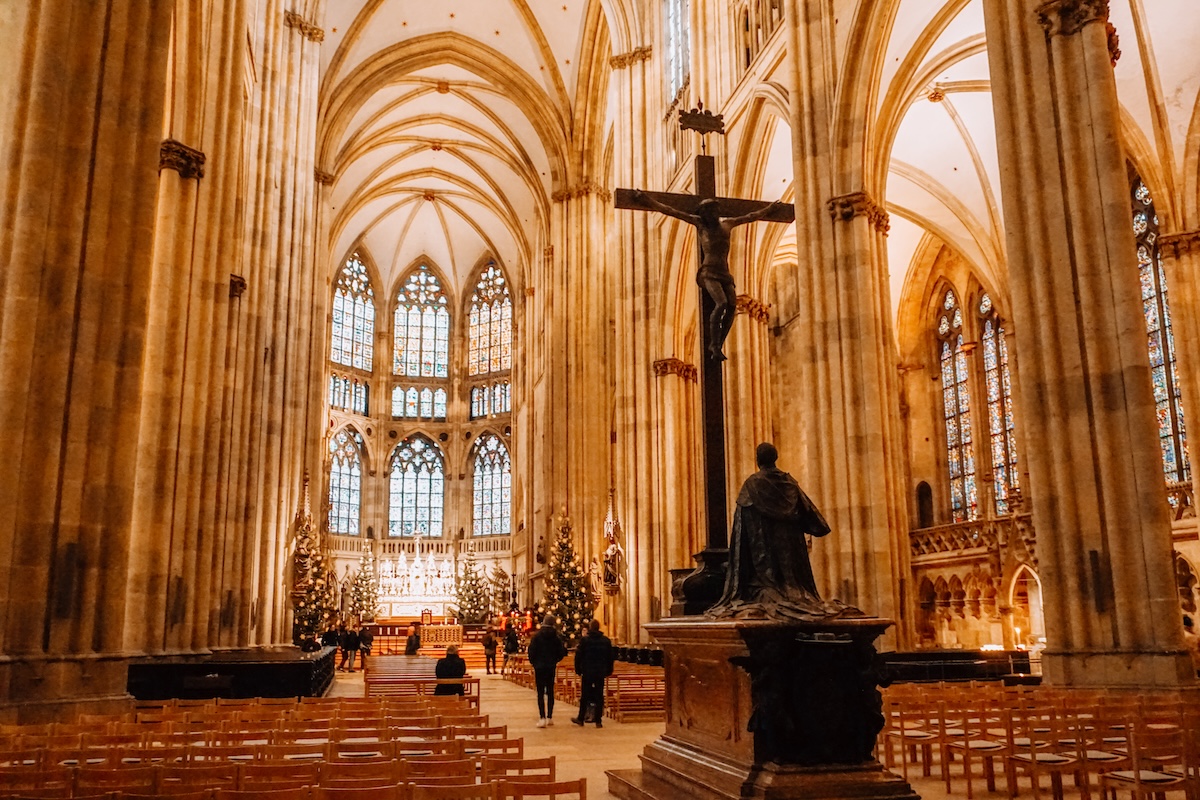
The Regensburg Cathedral (Regensburger Dom or St. Peter’s Cathedral) is the only Gothic cathedral in Bavaria. It’s known for its medieval stained glass windows dating from the 13th and 14th centuries.
Funds for the construction of the cathedral ran out in 1520, so it sat unfinished with two stumps for towers for 350 years. It was finally finished in the 1800s by order of King Ludwig I of Bavaria — so in a way the cathedral is partly “new.”
The cathedral marks the center of the Old Town and is one of the main attractions in Regensburg.
Visit the Neupfarrplatz and Church
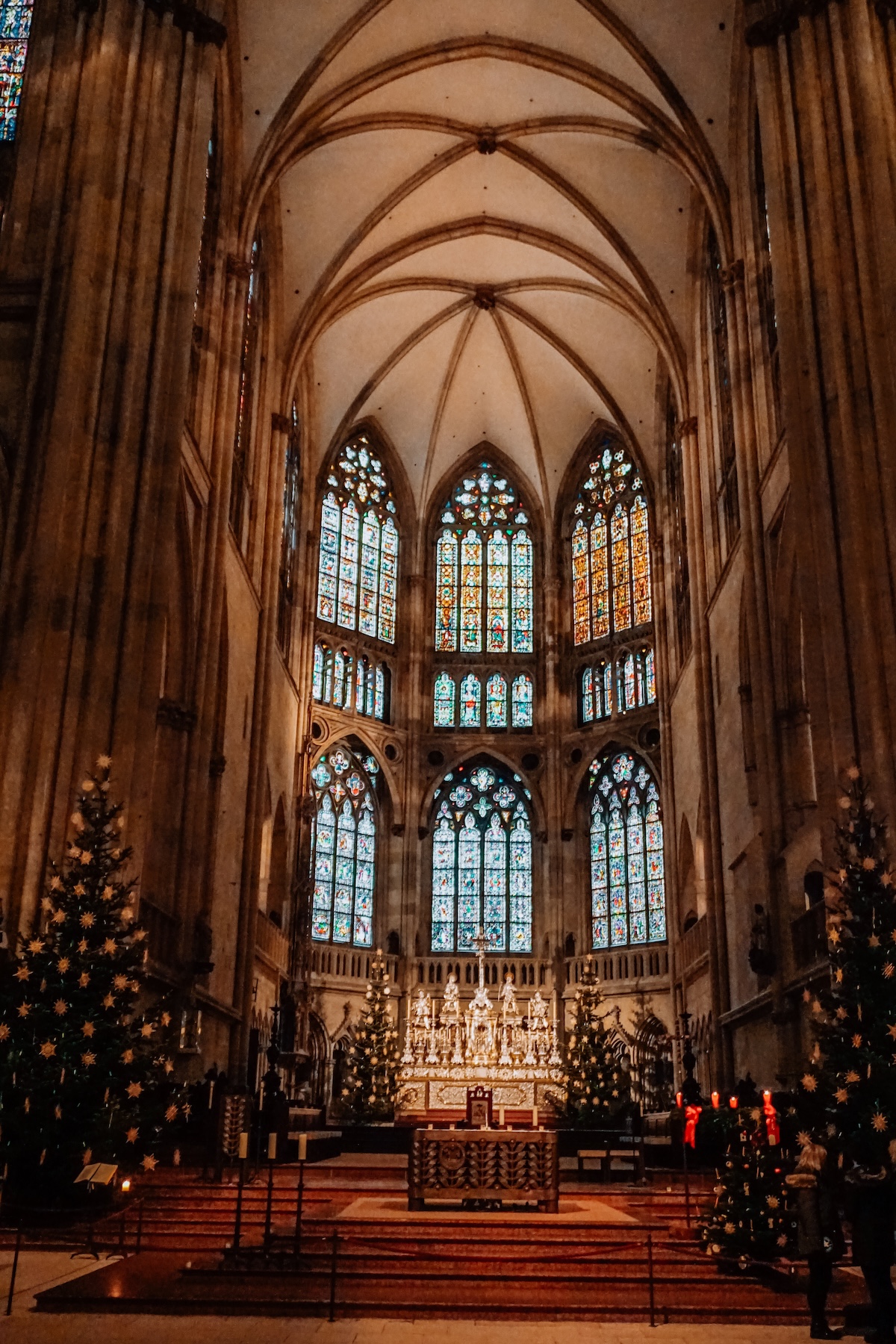
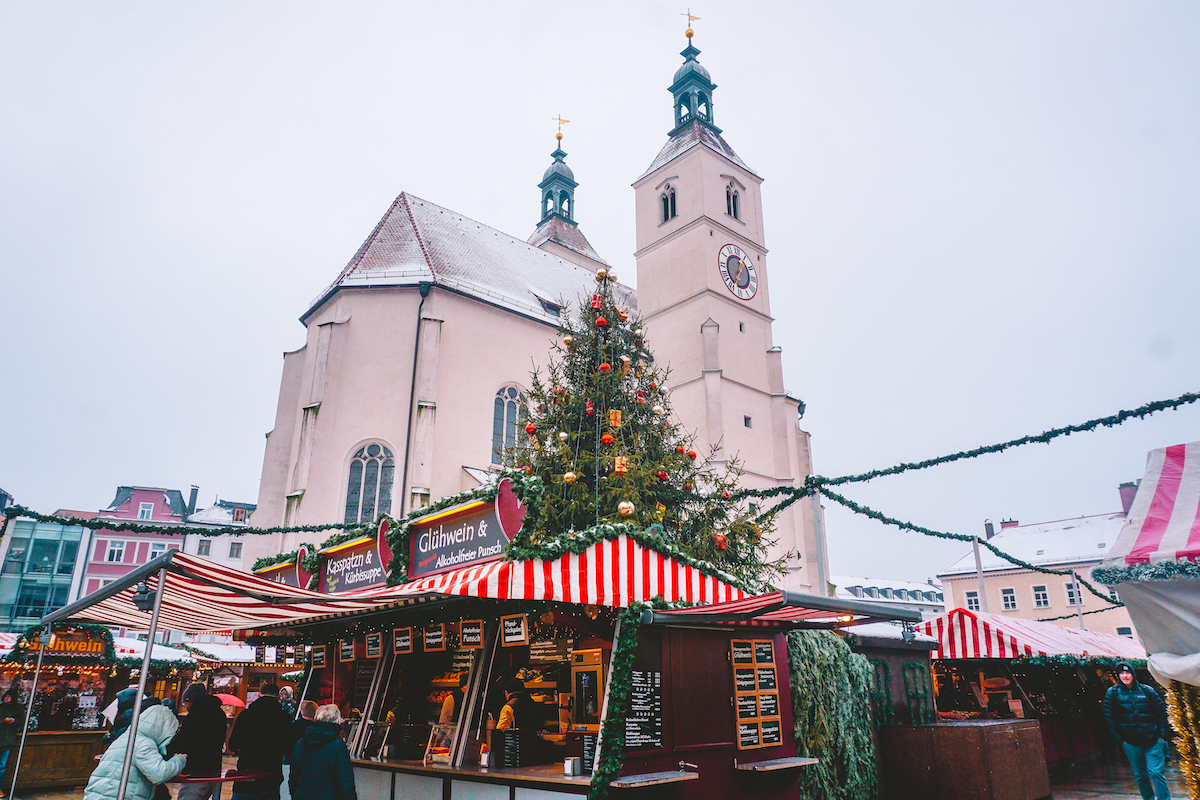
Neupfarrplatz is a busy square in the Old Town with a dark history.
During the Middle Ages, the city’s Jewish quarter was located here. In 1519, the Jews were expelled from Regensburg and the quarter was destroyed. In its place, the city constructed a Christian church and built the square up around it.
The Neupfarrkirche (church) was the first Protestant church in Regensburg. You can enter the church for free, so it’s worth popping into while you’re exploring Neupfarrplatz.
Today the square is lined with shops and cafes, and during Advent the city’s main Christmas market is set up here.
Tour St. Emmeram’s Palace (Thurn und Taxis)
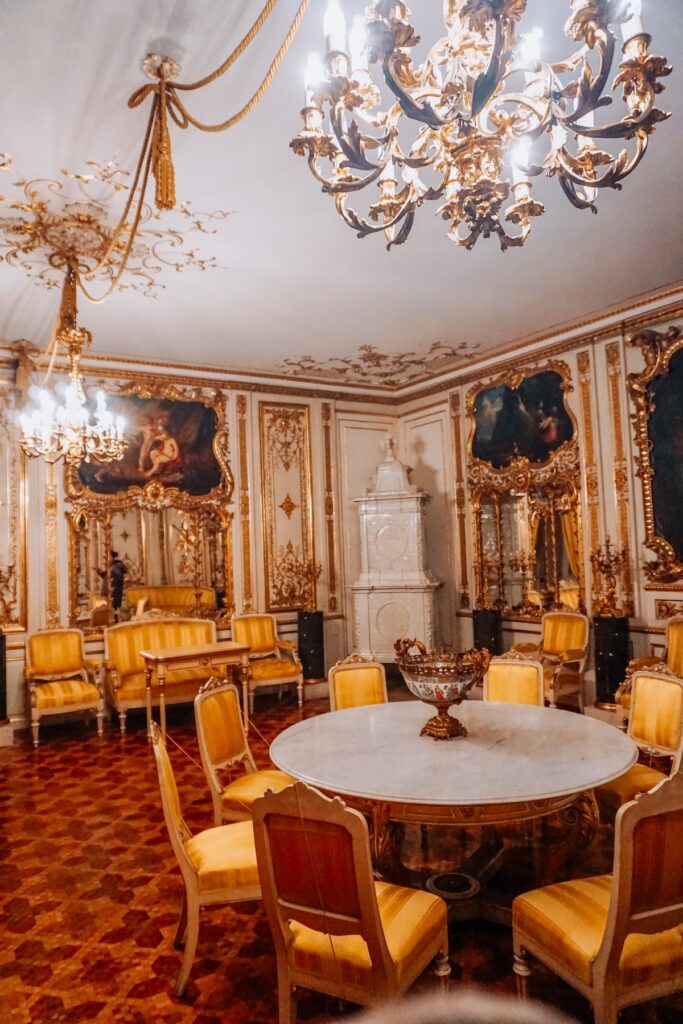
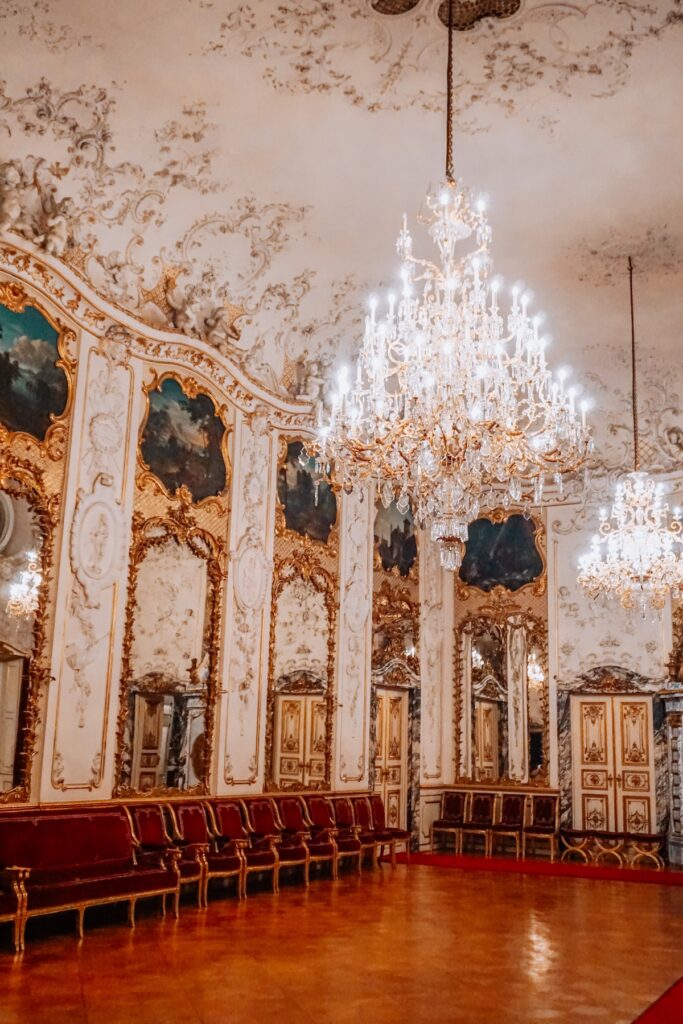
One of my personal favorite places to visit in Regensburg is St. Emmeram’s Palace (also known as the Palace of Thurn und Taxis). St. Emmeram’s is the largest privately inhabited palace in Germany — yes, the noble Thurn und Taxis family still live and work here!
The Thurn und Taxis family has a fascinating history. They were responsible for running the private postal service within the Kingdom of Bavaria from 1806 to 1867. As part of their compensation for establishing the postal service, the king of Bavaria also granted the Thurn und Taxis family the monastery complex that the palace now rests on.
That’s also how the palace got its name; the monastery complex was attached to the Basilica of St. Emmeram, which you can still visit today.
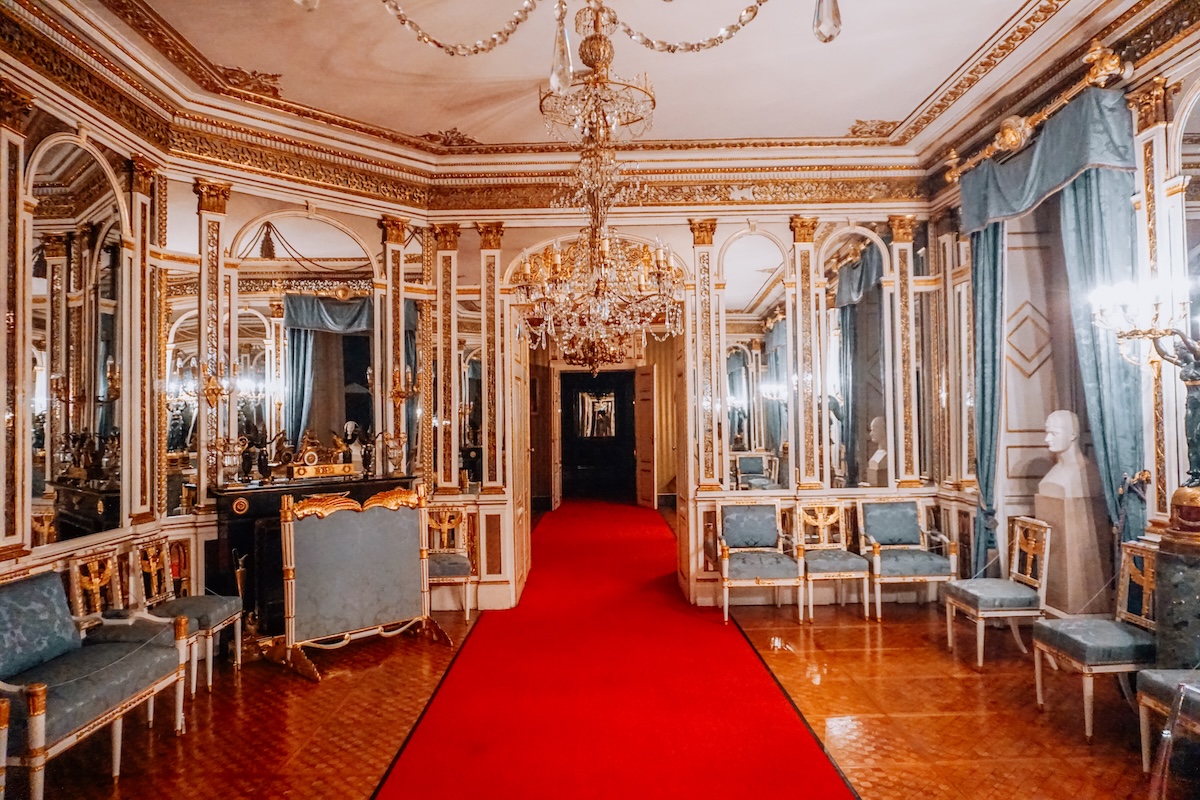
I strongly suggest touring the palace while you’re in Regensburg, noting that it’s only open to the public on Saturdays and Sundays, and only for a limited amount of time. For that reason, I recommend booking your tickets in advance (cost is 17 Euros).
Claire’s Tip: St. Emmeram’s Palace hosts my all-time favorite Christmas market (and I’ve visited a lot of Christmas markets since moving to Germany in 2019!). Be sure to read my full review of the Romantic Christmas Market at St. Emmeram Palace before planning your visit.
Visit the Basilica of St. Emmeram
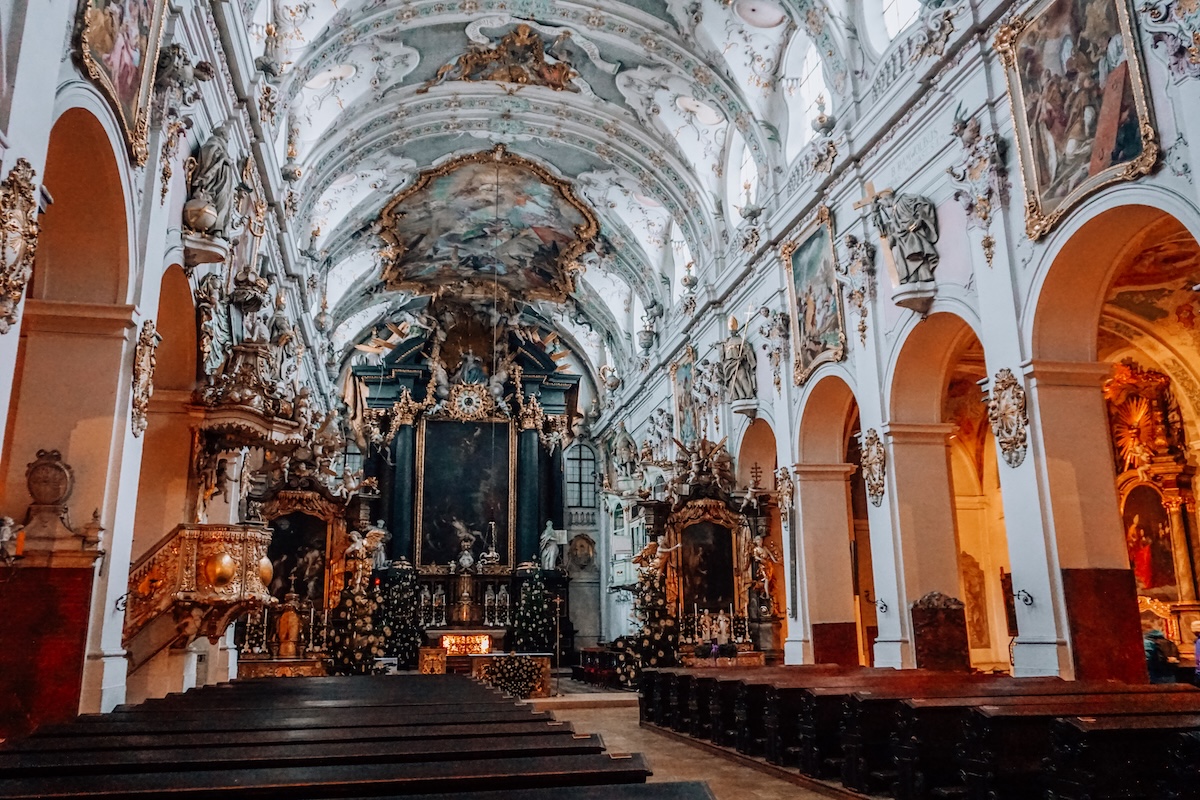
Within the St. Emmeram’s Palace complex, you’ll find the lavish Baroque-style Basilica of St. Emmeram. The monastery was first established in 800 AD near the grave of the Franconian bishop Emmeram.
The interior of the basilica is incredibly opulent; its pale walls are laden with oil paintings and sculptures the likes of which I’ve never seen before.
I visited the basilica near dusk and had the sanctuary to myself. At that time of day, it’s hauntingly beautiful and very peaceful. Definitely a must-see in Regensburg!
Visit St. Jacob’s Church (Scots’ Church)
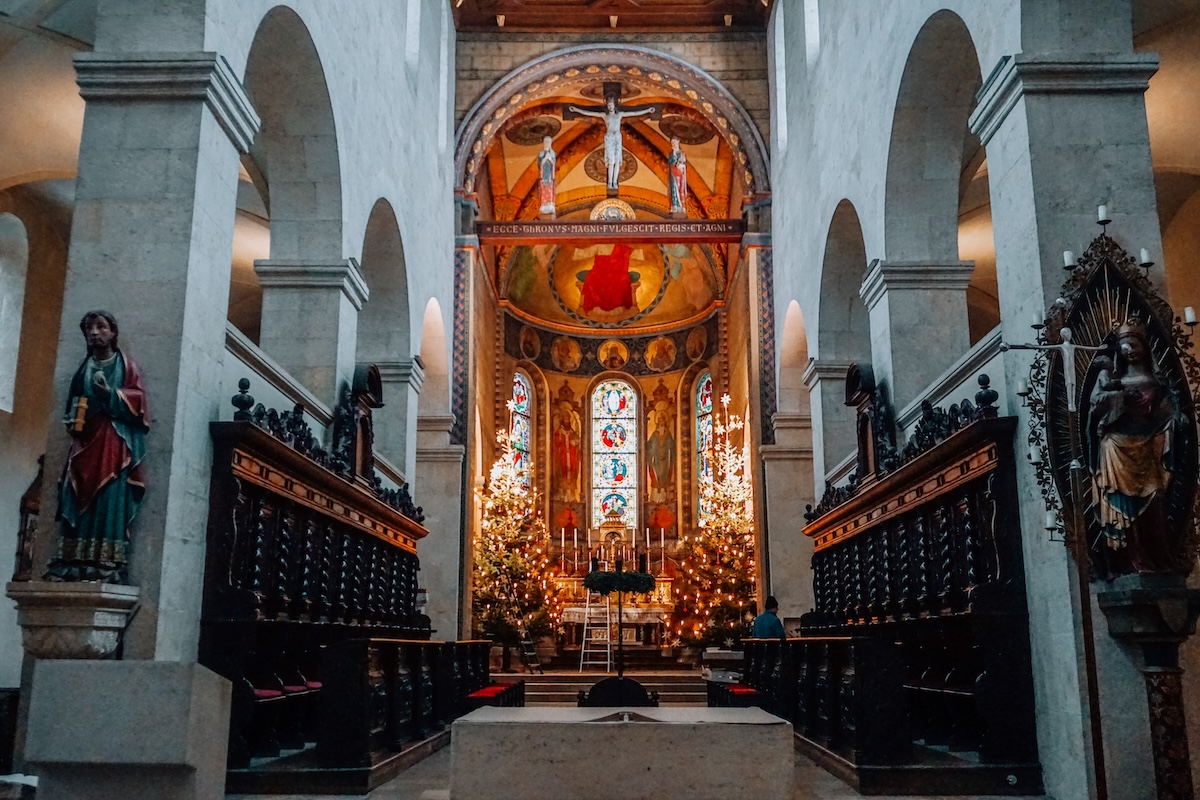
A lesser-known Regensburg tourist attraction is St. Jacob’s Church (sometimes called the Scots’ Church or Scots’ Monastery).
The church was built in the High Romanesque style, and its foundation stone was laid in 1090. For 400 years, Irish monks called St. Jacob’s home; after the Irish monks, Scottish Benedictine monks followed suit for another few hundred years.
Before entering St. Jacob’s, take a moment to admire the stunning Schottenportal. It’s an elaborately carved entry portal that’s 15 meters wide and 8 meters high. The carvings in the stonework deal with the Last Judgment, Heaven, and Hell — more than that, no one can say for sure!
Walk Across the Old Stone Bridge (Steinerne Brücke)
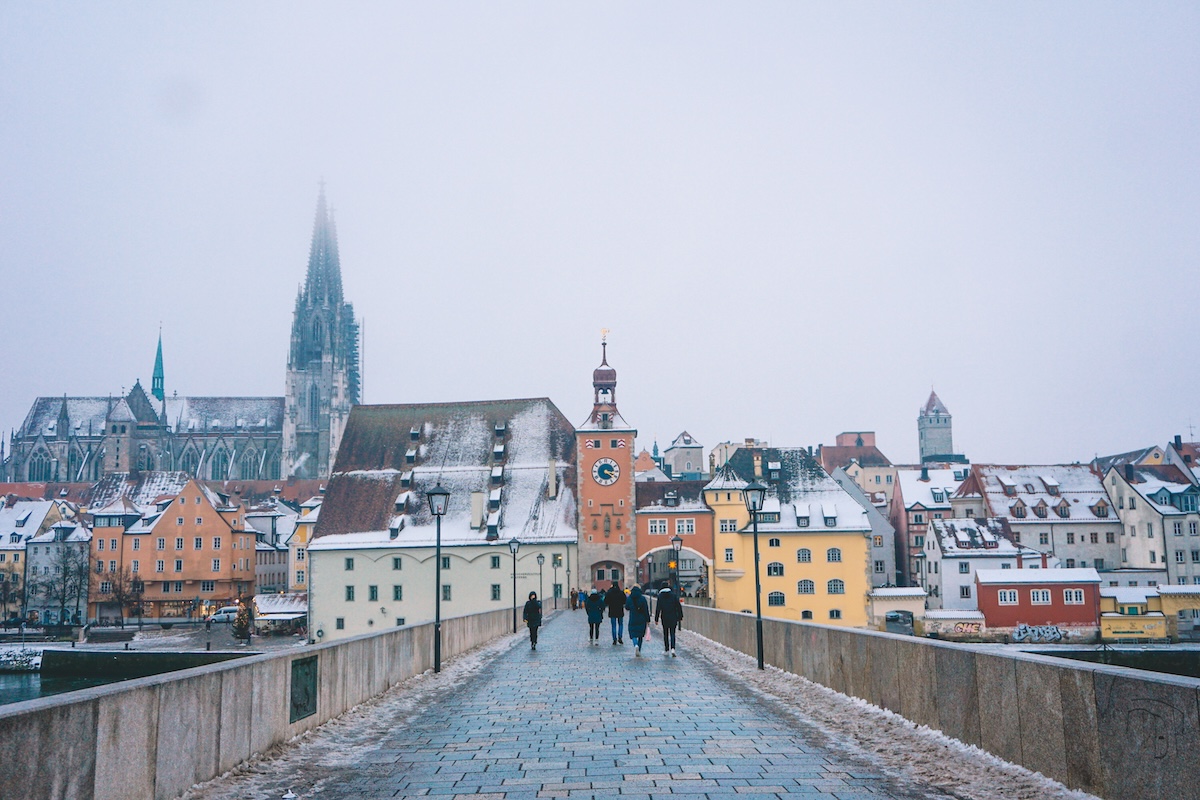
No trip to Regensburg is complete without crossing the Danube River via the Old Stone Bridge. It’s the oldest preserved bridge in Germany, with construction starting on it in 1135 AD.
Until 1935, the Old Stone Bridge was the only reliable bridge in Regensburg that crossed the Danube River. The bridge would have originally been guarded by three towers, but unfortunately they’re no longer standing.
Claire’s Tip: For an unbeatable view of the Old Town, walk across the Old Stone Bridge to the opposite bank of the Danube River. You’ll be able to take a photo of the bridge with the Old Town skyline in the distance — it’s gorgeous!
Explore the Stadtamhof Neighborhood
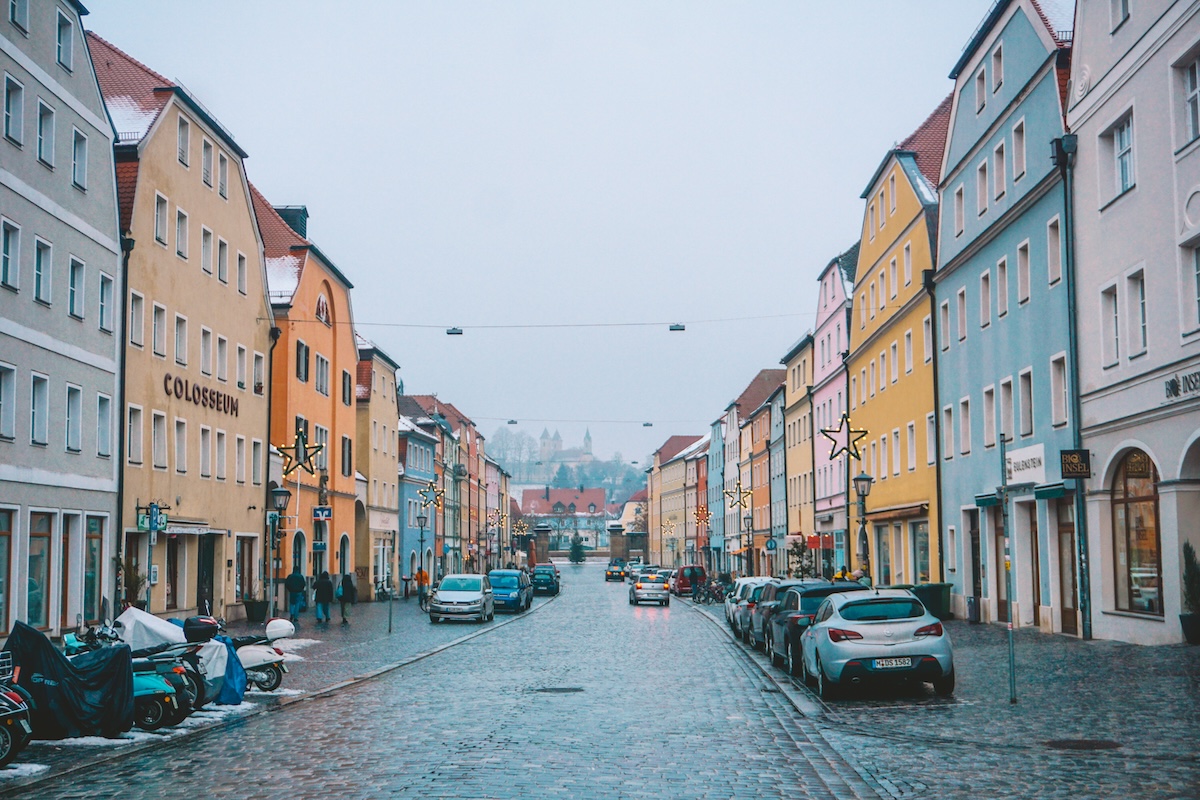
When you cross over the Old Stone Bridge to the opposite riverbank, you’ll enter a small neighborhood called Stadtamhof. Once a separate village, it’s now part of Regensburg’s UNESCO World Heritage Site.
Stadtamhof is a very small neighborhood that sits on an island in the middle of the Danube. It’s a pretty area to wander around, and the few sights to see include:
- St. Katharinen Platz — A historic square with an old Hostpial Church you can pop into, plus a very pretty beer garden (the Spitalbrauerei). There’s also a small Christmas market here in December!
- St. Mang — AKA St. Andrew’s Church in English. It’s a stunning rococo church.
- Andreasstadl — An old salt warehouse that’s been turned into an art academy, cafe, and hotel.
Visit a Museum
There are a few popular museums in Regensburg that are worth noting.
- House of Bavarian History — The name says it all! This museum explains the history of Bavaria from its founding through WWII and beyond.
- World Heritage Visitor Center — A small visitors center with an exhibition on the history of the city.
- Regensburg History Museum (Historisches Museum Regensburg) — Regensburg’s history from the Stone Age through the present day is explained in the rooms of a 13th century monastery.
- Dachshund Museum (Dackelmuseum) — Yes, this is a museum solely dedicated to everyone’s favorite sausage dog.
Claire’s Tip: If you’re only in Regensburg for one day, then I suggest spending your time walking around seeing the sights instead of going to a museum. But a museum visit is a good option if you’ve been to Regensburg before or if it’s raining!
Seasonal Activity: Visit the Christmas Markets
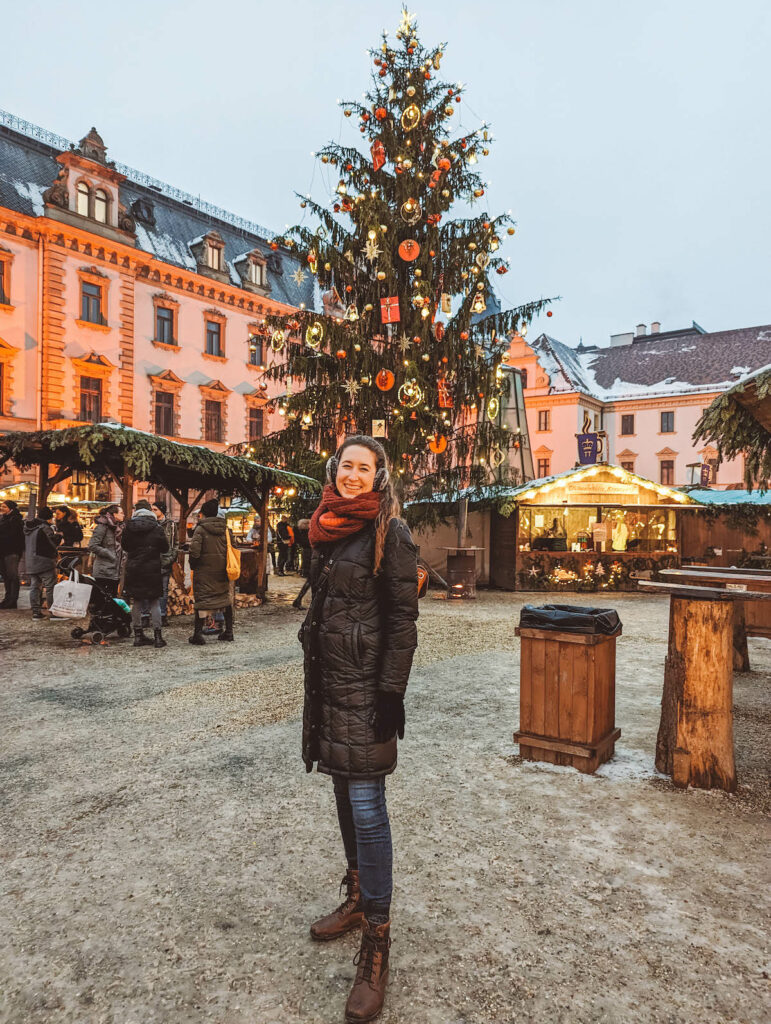
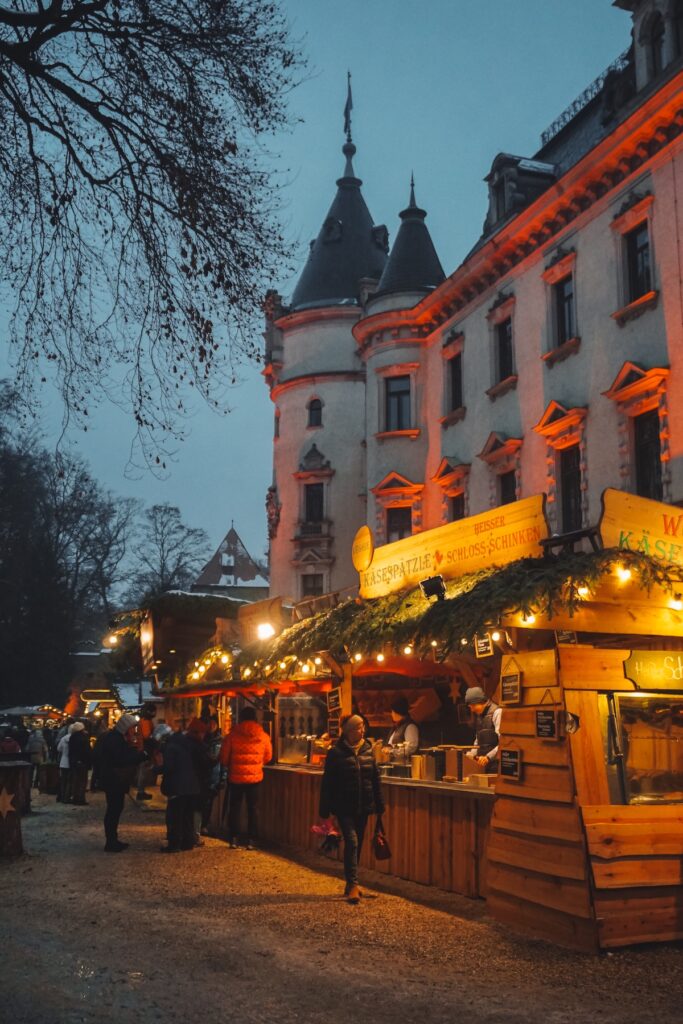
Regensburg has one of the top Christmas markets in Germany, so count yourself lucky if you’ll be visiting this medieval city during Advent!
There are actually a number of Christmas markets in Regensburg, but the best of the best can be found at St. Emmeram’s Palace (Thurn und Taxis).
If you’ll be in Regensburg around Christmas, I recommend exploring the Old Town and the Christmas markets there during the day and then heading to St. Emmeram’s Palace near dusk to spend the evening at that Christmas market.
🎄Detailed Guide to the Regensburg Christmas Markets + Tips for Your Visit 🎄
Day Trips From Regensburg
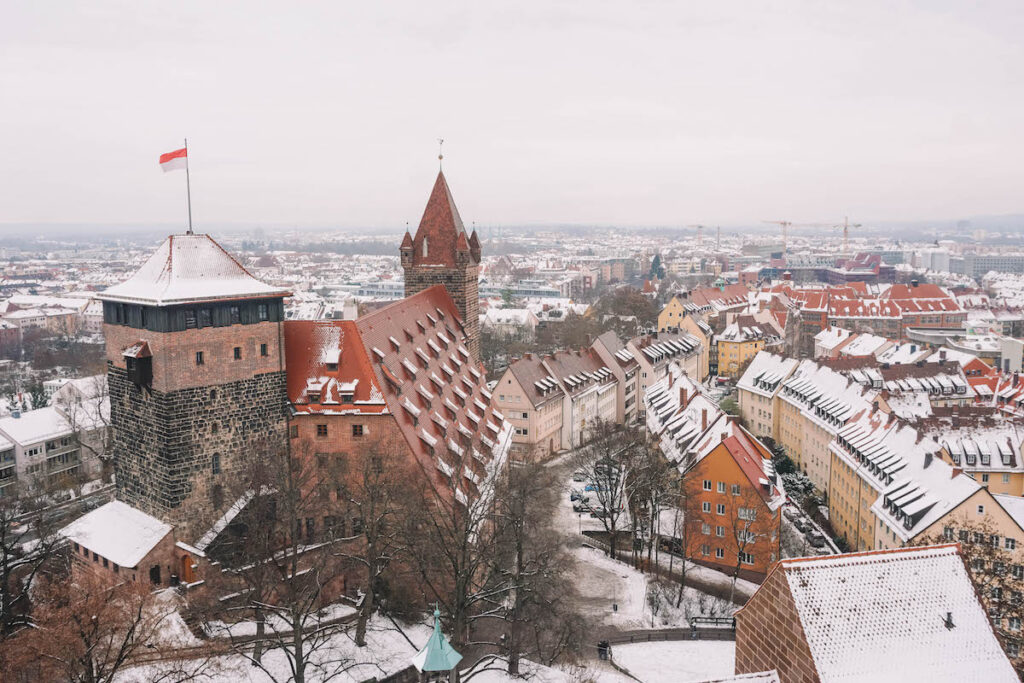
Regensburg’s prime location in the heart of Bavaria makes it a fantastic home base for exploring the region. I’m sure there are many more day trips from Regensburg than what I’ve personally experienced, but places I’ve visited and loved include:
- Valhalla — This is a Neoclassical building constructed to look like a temple. It was commissioned by King Ludwig I as a German national monument to remember notable German-speaking citizens. You can visit by car (25 minutes), by bus (40 minutes), or as part of a scenic 2-hour Danube river cruise. So technically this is more of a half-day trip!
- Munich — There’s WAY too much to do in Munich than you can accomplish in one day, so I suggest exploring just the Old Town. You’ll be able to see most of the main sights, you just won’t be able to visit the former royal palace or any of the museums.
- Nuremberg — You can easily fill an entire day in just Nuremberg’s Old Town. Definitely make sure to tour the Imperial Castle (Kaiserburg), see the half-timbered houses along Weißgeberstraße, sample the Elisenlebkuchen (local gingerbread), and go into the Church of St. Lawrence.
Is Regensburg Worth Visiting? Final Thoughts
Now that you know what to do and see in Regensburg, it’s time to actually book your trip! It’s home to my favorite Christmas markets in Germany and is all around just a fantastic place to visit in Bavaria.
Whether you’ll be visiting Regensburg on a day trip or plan on cruising down the Danube River, you’re bound to fall in love with this medieval city.
Don’t forget to follow me on Instagram to keep up with my daily adventures in Berlin and beyond!

Comments & Reviews
What a gorgeous town! German Christmas Markets are something else.
I couldn’t agree more, Stephanie! Thanks for taking the time to leave a kind comment 🙂